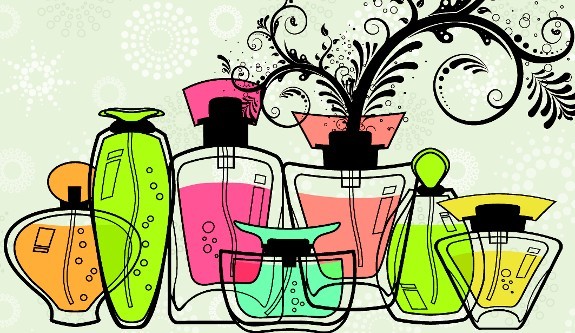How hemp earned the name ‘weed’, we’ll never know. Annabel McAleer uncovers the many uses for this much-maligned super grass, while Sarah James discovers that hemp is headed straight to the high-end
Hemp has moved from sneaky high, to seriously high-end. Deck out your life with designer dresses, luxurious linens and sumptuous skincare made from nature’s super grass. Welcome to Mary Jane’s classy joint
TOP: Rada three-seater couch from David Shaw, covered in Keri Keri Stone fabric with Pacific Summer Lime front cushions from Hemptech. Haast curtain in claret (hemp/linen blend) from Hemptech. Pohutakawa cushions in natural/raspberry (linen/hemp) and chartreuse/chocolate (velvet/linen/hemp) from Jo Muir. Spiral bowl and small Flip table/stool by David Trubridge from Essenze. Puawai Blossom glass sculpture by Te Rongo from Essenze. Hemp twine balls from The Hemp Store. All other items shot on location.
Imagine a plant that can make fabric stronger and warmer than cotton, paper that lasts hundreds of years, and tough plastic composites that are lighter than fibreglass. Its seeds produce oil rich with amino and essential fatty acids in perfect balance, and contain a protein as nutritious as soy, which can be processed into flour, milk and cereal.
It produces more biomass than any other plant species—even corn—making it a prime candidate for biofuel production and a hungry carbon sink. It matures in just 120 days, grows without pesticides or herbicides, prevents erosion, conditions soil and suppresses weeds. And it’s perfect for New Zealand: frost-tolerant, it requires little water, and when processed into fabric it filters 95 percent of ultraviolet rays.

Left to right: Our Hope in Hemp dress by Starfish. Smith Center men’s hemp/cotton shorts from The Hemp Store. Brainfree men’s hemp t-shirt from The Hemp Store. Use Again skirt by Starfish. Hemp twine from The Hemp Store. In basket: Smith Center women’s cream hemp/silk blouse, Pure backpack and camera bag, iPath Ras hemp/leather skate shoes, cream women’s tank top and satchel, all from The Hemp Store. Baskets stylist’s own.
This wonder plant has medicinal value, too: it can dull pain, stimulate the appetite and reduce nausea in terminally ill cancer and Aids patients.
Cannabis sativa also makes you feel a bit silly when you smoke it—and it’s abuse of this latter quirk of nature that has held back industrial-scale hemp farming for decades. It wasn’t always this way.
Evidence of hemp use dates back to 8000 BCE. Until the late 19th century, hemp provided up to 90 percent of the world’s paper, and was used for some of the world’s most important historical documents: newspapers, money, Bibles and America’s Declaration of Independence. Cannabis growing was once downright encouraged; during World War Two, the US government ran a ‘Hemp for Victory’ campaign. US presidents George Washington and Thomas Jefferson farmed it, the first pair of Levi’s were made out of the stuff, and Henry Ford produced a car with a hemp composite plastic body in 1941.

Soaps and body wash from Blue Earth. Canapa D’Italia shower gel, moisturising cream and soaps from Forrest. Hempz Colour Preserve Shampoo and Colour Preserve Conditioner from Hempz. Hemp rope from The Hemp Store

Screenprinted hemp cushions by Homebase Collections

Reefton Moss 100% hemp curtain from Hemptech (on chair). Indoor/outdoor Meditation cushions (100% hemp), Pohutakawa cushions in chartreuse/chocolate (velvet/linen/hemp) and Peony cushions in chocolate/cherry (velvet/linen/hemp) from Jo Muir. Canalade hemp seed oil dark chocolate by Hans Natur. Table, chair and crockery shot on location
Some say New Zealand and Australia were intended to be ‘hemp colonies’, growing vast quantities of the plant so the British Empire could reduce its reliance on Russian hemp. Abel Tasman and James Cook brought it here, and hemp was grown legally until 1948. (Smoking it wasn’t illegal until 1961.)
If it wasn’t for the plant’s wackier properties, hemp could well have been a major contributor to New Zealand’s economy. If hemp campaigners are successful, it may yet.
Since 2006, the Misuse of Drugs (Industrial Hemp) Regulations have once again allowed industrial hemp to be grown in New Zealand. Cultivation of specific varieties producing little tetrahydrocannabinol (THC)— the druggy part—and lots of fibre and seed is allowed. Growing licences cost $500, and require crop THC levels to be regularly tested: if they’re higher than 0.5 percent, the crops may be destroyed. By comparison, THC levels can be as high as 30 percent in plants grown for drug use.
Former Green Party MP Nandor Tanczos is a long-standing hemp campaigner, and his private member’s bill on industrial hemp led to the 2006 regulations. But he’s still not happy with the results. Despite the granting of cultivation licences and the virtual absence of THC, industrial hemp remains classed as a controlled drug, regulated by government medicines agency Medsafe. And despite its nutritional value, it is still illegal to sell food containing hempseed protein or whole seeds, except as animal feed.
“The hemp regulations are extraordinarily unhelpful—in fact, they appear to be sabotaging the industry,” he says.
Overseas, environmentally superior building products, such as concrete, insulation and fibreglass substitutes are being developed from hemp fibre. Oils from the seed are being turned into bioplastic and ethanol. Hempseed protein is being devoured by the health-conscious in biscuits, breakfast cereals and even ice cream.
The international market for hemp products could be worth up to $50 million a year to New Zealand. Even Federated Farmers suspects there are bucks in it—the generally conservative organisation has supported industrial hemp trials in the past.
Leading New Zealand’s hemp industry is Hamilton-based Hemptech, a small company making an international name for itself in furnishing textiles. Hemptech creates thousands of metres of hemp fabrics every month, printed with uniquely Kiwi designs. But its sights are set even higher: Hemptech is developing product lines it believes will turn into a multimillion-dollar industry over the next five to ten years. It has received $230,000 in government funding for its ongoing research into hemp composite technology—and there’s a big market for it. New cars by Mercedes-Benz, Porsche and Lotus all contain hemp fibre composites.
Luxury cars, beautiful furnishings and divine desserts? Looks like hemp’s image is moving from hippie to high-end.
Styling
Sarah James / Gilded Lily
Photography
Wendy Fenwick / Flash Studios





